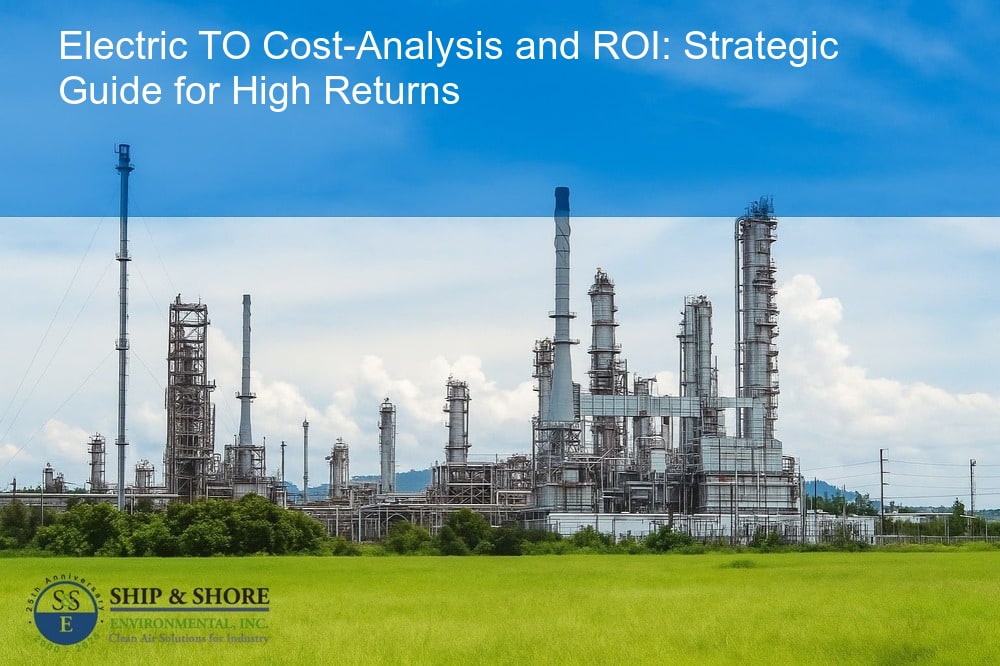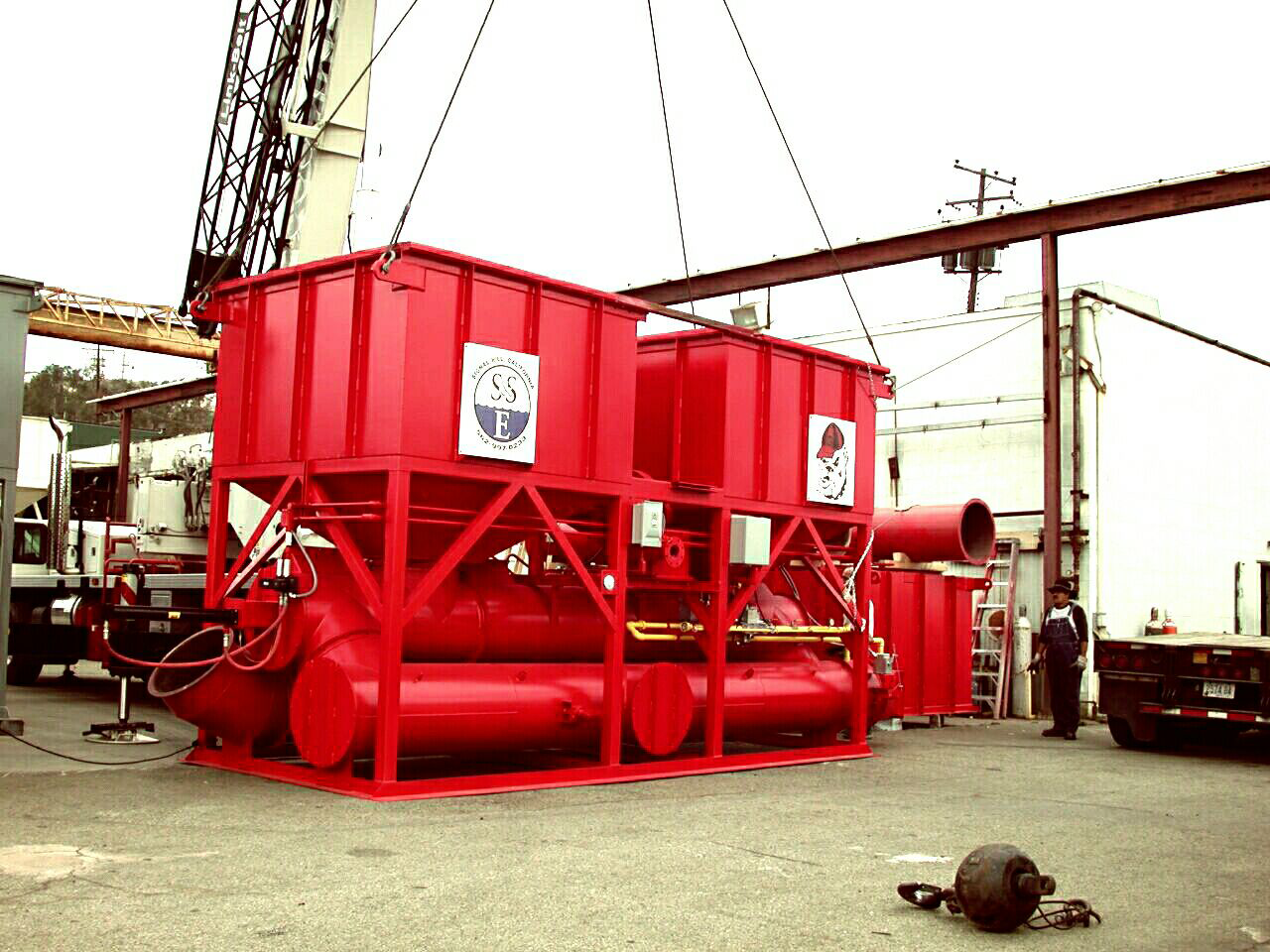
Navigating Electric TO Cost-Analysis and ROI: An Expert Guide
July 23, 2025 6:39 amSetting the Stage: Understanding the Role of Electric TO in Today’s Industry
In an era characterized by rapid technological advances and the push for sustainable industrial practices, conducting a thorough Electric TO cost-analysis and ROI is more crucial than ever. Electric Thermal Oxidizers (TOs) have emerged as pivotal players in optimizing energy efficiency, reducing environmental impact, and ultimately boosting profitability. For industries ranging from manufacturing to chemical processing, the transition to Electric TOs signifies not just compliance with environmental regulations but also a significant step toward realizing long-term financial gains.
Investing in the Future: The Significance of Conducting a Thorough Electric TO Cost-Analysis
Investment in Electric TOs represents a forward-thinking approach to business operations, reflecting an enterprise’s commitment to sustainability and efficiency. A comprehensive cost-analysis uncovers the multifaceted benefits of this investment, encompassing initial capital expenditure, operational savings, and potential government incentives or tax breaks. By integrating these factors, businesses can make informed decisions that align with both their financial objectives and environmental responsibilities. This forward-looking perspective is essential in an increasingly green-conscious global marketplace.
Impacts on Profitability: The Potential ROI from Electric TO Investment
The sign of a successful investment lies in its return, and the ROI from Electric TOs can be substantial. Calculating this ROI involves considering various parameters such as reductions in energy consumption, lower maintenance costs, and enhanced production efficiency. Each of these factors contributes to a more streamlined operation with lower ongoing expenses. Additionally, the potential for increased profitability extends beyond immediate financial gains; it encompasses improved corporate reputation, compliance with stricter environmental standards, and long-term viability.
Understanding the intricate dynamics of Electric TO cost-analysis and ROI is vital for any business looking to invest in new technologies. By delving into the specifics of this analysis, enterprises can leverage electric TOs to not only meet regulatory standards but to also foster innovation and competitive advantage in their respective industries.
Decoding Electric TO Cost-Analysis: Key Components in Focus
When it comes to understanding Electric TO cost-analysis and ROI, the initial step lies in breaking down the essential elements that contribute to a comprehensive assessment. First and foremost, the capital cost associated with electric thermal oxidizers must be thoroughly evaluated. This includes initial purchase prices, installation expenses, and the cost of integrating the system into existing operations. Moreover, operational costs should not be overlooked as they encompass energy consumption, maintenance, and potential downtime.
Another critical component is the environmental impact and associated regulatory compliance costs. Transitioning to electric thermal oxidizers often aligns with stringent environmental regulations, which can either increase costs or, alternatively, offer potential for subsidies and incentives. We must also consider the lifespan of the equipment and any foreseeable technological advancements that might affect its value over time. Together, these components present a holistic view of the financial commitments involved.
Calculating Returns: A Detailed Look at Electric TO ROI Measurement
Calculating the return on investment (ROI) for Electric TO demands a meticulous approach. To start, we need to establish a clear understanding of the savings generated from reduced fuel usage and lower maintenance requirements. By switching to electric thermal oxidizers, operations can anticipate substantial reductions in operational costs, most notably in fuel and emission fees. These savings over time significantly contribute to an improved ROI.
Additionally, one must factor in the longevity and reliability of the equipment. A well-maintained electric thermal oxidizer can outperform traditional systems, leading to fewer disruptions and extended periods of efficiency. Quality improvement and production consistency also play pivotal roles in ROI metrics. Streamlined operations devoid of frequent breakdowns translate to consistent output levels, which directly correlates to profitability.
Our thorough assessment should also take into account any financial incentives, such as grants or tax breaks, provided for upgrading to environmentally friendly technologies. These financial boosters can dramatically improve our ROI calculations, sometimes making the switch not only more appealing but also fiscally responsible.
Real-World Scenario: Case Studies Highlighting the Economic Efficiency of Electric TO Investment
Examining real-world scenarios provides valuable insights into the economic viability of investing in Electric TOs. In several documented instances, companies have seen marked improvements in their bottom line following the installation of electric thermal oxidizers. Normally, the process includes a detailed comparison of operational expenditures before and after the switch.
- A mid-sized manufacturing plant reported annual savings of 25% on energy consumption after the switch, alongside a 15% reduction in maintenance costs.
- A chemical processing unit demonstrated a 30% decrease in regulatory compliance expenses due to reduced emissions and improved air quality standards.
- A large-scale production facility highlighted the return on investment within three years, thanks to significant reductions in downtime and increased production consistency.
In each of these cases, the transition to electric thermal oxidizers wasn’t just about meeting industry standards but was also about optimizing operational efficiency. The initial cost, while significant, was recuperated through incremental savings and operational benefits. These real-world examples illustrate not only the economic but also the strategic advantages of Electric TO investment.
Did you know? A thorough Electric Takeoff (TO) cost-analysis can lead to a significant ROI, by optimizing material usage and labor costs in construction projects.
Drawing Conclusions: The Overall Implications of Electric TO Cost-analysis and ROI on Business Strategy
In our journey towards a more sustainable and profitable future, the role of Electric TO (Thermal Oxidizer) cost-analysis and ROI stands paramount. Conducting a meticulous cost-analysis enables us to identify and manage potential operational expenses effectively. By recognizing the financial metrics and understanding the diverse factors that affect costs, we can make informed decisions that facilitate optimized resource allocation and budget management.
The thorough assessment provided by Electric TO cost-analysis equips us to predict potential savings and expenditure accurately. By doing so, we can mitigate financial risks and ensure that our investments are both prudent and strategic. Moreover, a comprehensive cost-analysis enables us to highlight areas where operational efficiencies can be improved, further securing our competitive edge in the industry.
Forward-Looking Statements: Predicting the Future Trends in Electric TO Investment and Associated ROI
As we move forward, the landscape of Electric TO investment is likely to evolve in response to technological advancements and regulatory changes. Market trends suggest an increasing push towards greener and more energy-efficient solutions, underscoring the importance of thorough Electric TO cost-analysis and ROI evaluations. Our foresight into these trends allows us to stay ahead of the curve, leveraging emerging technologies to enhance our operations while minimizing costs.
Predictive analytics and data-driven insights will play a significant role in shaping future investment strategies. By continuously refining our cost-analysis techniques and ROI assessments, we can adapt to market demands and capitalize on new opportunities. The integration of advanced technologies, such as IoT and AI, will further streamline our processes, making Electric TO systems more efficient and cost-effective.
Lasting Impact: How Electric TO Investment Influences Long-Term Business Sustainability
Investing in Electric TO systems is not merely an operational decision – it is a commitment to long-term business sustainability. The positive outcomes of Electric TO cost-analysis and ROI extend far beyond immediate financial gains. They encapsulate our dedication to reducing environmental impact and adhering to stringent emission standards, reinforcing our reputation as a responsible and forward-thinking entity.
The insights gleaned from our case studies illustrate the tangible benefits of Electric TO investments. They provide empirical evidence of enhanced profitability, operational efficiency, and environmental stewardship. By prioritizing such investments, we not only achieve regulatory compliance but also foster a culture of innovation and continuous improvement.
In conclusion, the strategic integration of Electric TO systems, guided by a detailed cost-analysis and ROI framework, empowers us to navigate the complexities of modern industrial landscapes. This, in turn, ensures that we remain resilient, sustainable, and poised for growth in the years to come.
FAQ
What is the significance of Electric TO cost-analysis in business strategy?
Electric TO cost-analysis is crucial for business strategy as it helps in managing and predicting operational costs. By conducting such analysis, we can make informed investment decisions, optimize budgets, and enhance operational efficiencies, which ultimately contribute to our competitive edge in the industry.
How does Electric TO investment affect long-term sustainability?
Investing in Electric TO systems signifies a commitment to sustainability. It aids in minimizing environmental impact and meeting emission standards, which not only ensures regulatory compliance but also strengthens our brand as an environmentally responsible company. Consequently, this fosters a culture geared towards innovation and continual improvement.
Can you provide examples of how Electric TO investments have proven economically efficient?
Our case studies provide clear instances where investments in Electric TO systems have led to improved profitability and operational efficiency. These real-life examples showcase empirical benefits such as cost savings, energy efficiency, and adherence to environmental guidelines, emphasizing the economic efficacy of such investments.
What future trends in Electric TO investment could affect ROI?
Future trends suggest a move towards greener and more energy-efficient solutions, driven by technological advancements and changes in regulations. Our continued refinement of cost-analysis and ROI practices sets us up to adapt to these trends and make the most of emerging opportunities, thereby influencing the return on investment favorably.
How does the integration of advanced technologies impact Electric TO system efficiency and cost?
The introduction of cutting-edge technologies like IoT and AI into Electric TO systems can significantly enhance their efficiency and reduce operational costs. Our commitment to innovation allows us to employ these technologies effectively, creating smarter, data-driven operation models that align with our objectives of sustainable growth and superior ecological performance.
Categorised in: Blog

